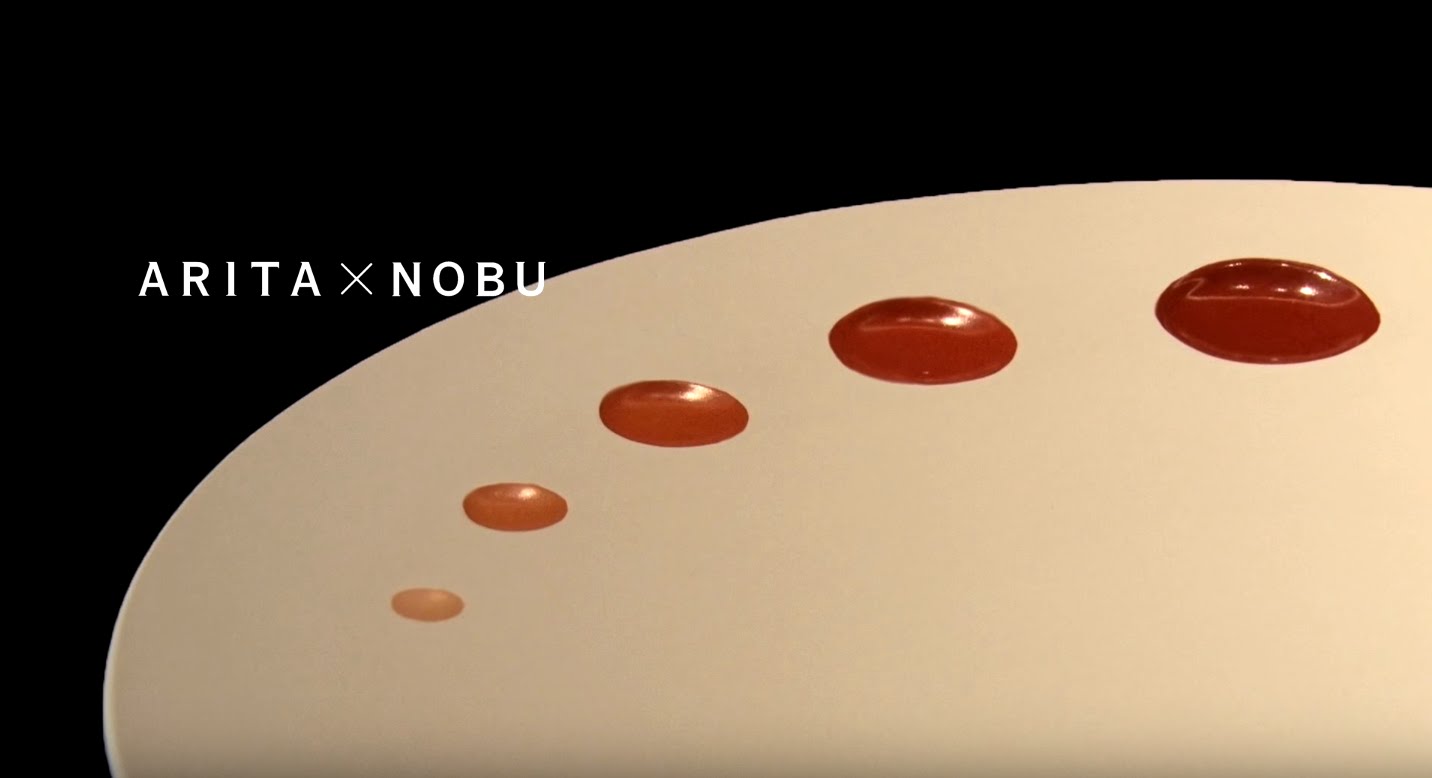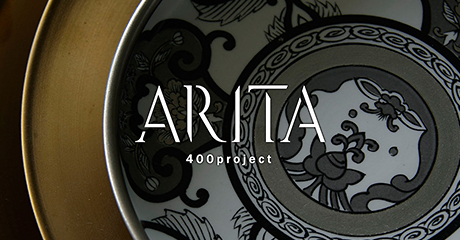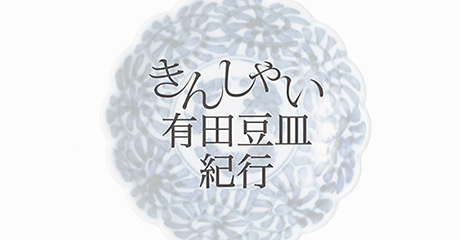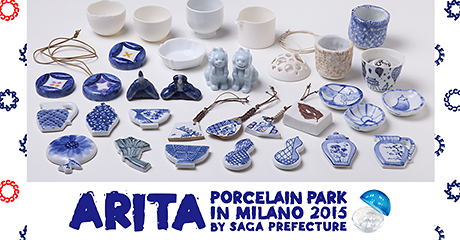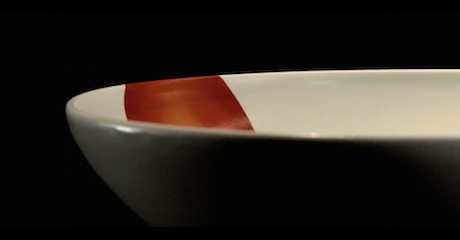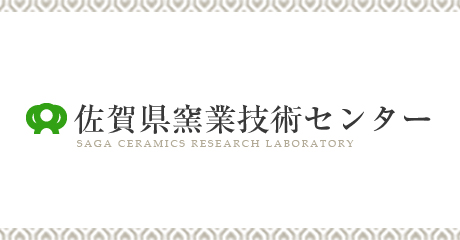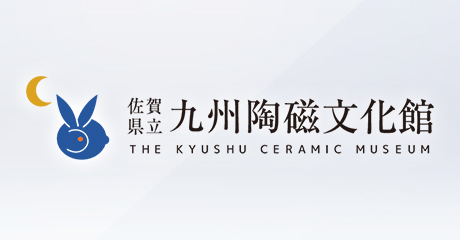2016: 400th Anniversary of Arita porcelain, and on to ARITA EPISODE 2
In 1616, Japan’s first porcelain was fired in Arita and since then porcelain production by the artisans living in the area has continued unbroken for four hundred years. In 2016, Arita porcelain celebrated its anniversary and set the stage for the future of porcelain.
When we look back at this long history of Arita porcelain, we find they are centuries filled with extraordinary innovation.
Porcelain production first started with the discovery and quarrying of the kaolin deposits used to make porcelain clay, and over the 400 years, improved ingredients and mixtures were developed to ensure stable production, and still today research into materials and techniques continues.
Over the centuries all the manufacturing techniques made progress such as making the clay base, moving from hand-forming to throwing on a wheel, and for more complicated shapes, the use of a cutting cord and molding were all perfected. To increase the production volume, plaster molds were introduced for casting; then, mechanization was further promoted and pressure casting and roller machine forming appeared, which enabled an unimaginable scale of mass-production far beyond the capabilities of handwork.
When Arita porcelain is mentioned, many people have an image of vivid and intricate painting, and in its decorative methods as well, a number of techniques and paints were specially developed, such as underglaze decoration with gosu (cobalt blue) or gorgeous overglaze painting, known as akae, with red, green, yellow, and gold colors. Arita porcelain has always responded to the market demands for beautiful new styles; after the era of hand-painted decoration, the use of stamps for line drawing was developed along with stencil and copperplate transfer printing, followed by transfer for overglaze painting resulting from print technology improvements, pad printing enabling elaborate expressions on curved surfaces, and spray painting. Concurrently, for tableware to serve food, the search for safer materials resulted in lead-free paints and the evolution of diversified glazes.
In the firing techniques, seeking for stabler productivity and a greater degree of creative freedom, the incremental firing process was developed: bisque firing, high-temperature firing, and low-temperature firing. Often described as the “art of fire,” ceramic works truly deal with fire, and across the eras the fuel source too has kept changing, from firewood to coal, and now fuel oil, electricity, and gas; along with such shifts, techniques have evolved to make the best use of the characteristics of each fuel. In addition, the introduction of different sized firing kilns has led to improved productivity and economy.
The whole manufacturing process of porcelain from raw kaolin through to the finished articles of today, has required an immense accumulation of diverse knowledge, much experience and extraordinary improvements to technology; it is quite impossible for one artisan to acquire all these skills. Exactly because of this large diversity, each process is specialized: the quarrying of kaolin, the manufacture of clay, mold production, base manufacturing, development of paints and glaze, and the firing of pottery. A separated production system was established to ensure finished products of the highest quality.
The presence of such skilled craftsmen in the production area gave rise to merchants and trading companies setting up in Arita who then made every effort to spread Arita porcelain throughout Japan and overseas to Europe. This naturally led to a structural separation of manufacturing and sales.
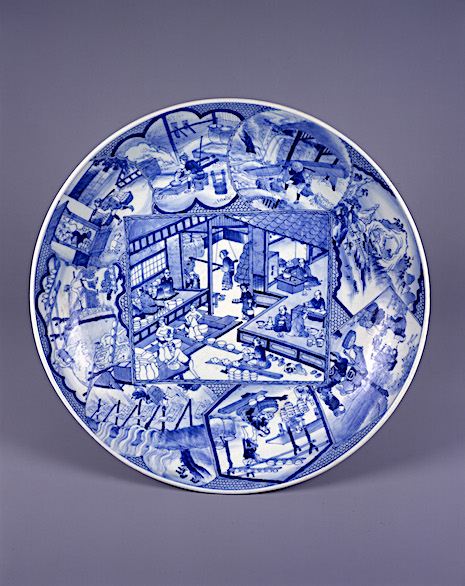
According to Yukio Suzuta, the Director of Kyushu Ceramic Museum, it was “stimulation from the outside” that played a major role in the history of the development of Arita porcelain.*1 Starting from the first ceramic firing by the now revered Korean potter, Yi Sam-pyeong, two other seminal events are the incoming of technology and materials from China and Korea through the trading port Dejima, Nagasaki, and the introduction of Western technology brought through the employment of such foreigners as Wagener drawn to Japan after the Meiji Restoration. On the other hand, in the area of distribution, as seen in orders from Europe through the East India Company, and demand from the large domestic consumption areas such as Edo, Osaka, and Kyoto, a monozukuri (art of manufacturing) firmly based on meeting market demands was required, and the region has met this challenge by producing the highest quality ceramics.
Ceramics production was once a cutting-edge high-tech industry, and as the region’s ceramics were a little superior to competitors, the industry brought great wealth to Arita with its close proximity to the raw materials; however, the rise of other domestic production areas, European imports of an equal quality, and the inflow of low-cost overseas products into the Japanese market due to the globalization of recent years, have all contributed to a decline in Arita’s predominance, and after the peak of 1991, the region has been unable to halt the decrease of sales.
In the last few decades people’s lives have been enriched and since there are now many more diverse lifestyles, product development is required to meet the needs of the era. Unfortunately, the structural separation of manufacture and sales has contributed to the region lagging behind in developing products considering consumer psychology and market trends.
The Arita porcelain 400th anniversary celebration projects, ARITA EPISODE 2, were launched to greet the year 2016, as a mixture of celebrations and also as a time to assess the crisis of falling sales and to plan strategies for the next era; collaborations involving creative projects with the Embassy of the Kingdom of the Netherlands, and the extending of invitations to an exciting array of product development specialists and designers renowned for working in a borderless milieu at home and abroad. By including a variety of different approaches, ARITA EPISODE 2 explored the next-generation of monozukuri along with the entrepreneurs and artisans of Arita.
Nobuyuki Shiki, the President of the Saga Prefecture Arita Porcelain 400th Anniversary Projects Executive Committee, explained: “Although the projects are supported by Saga Prefecture, we do not plan to put on too many commemorative ceremonies and events, we will look toward the next 400 years, and explore our direction and challenges, in the full expectation of making a new step into the future.” Seventeen projects were launched and keeping with the history of Arita porcelain, they too received “stimulation from the outside.” Within the production area, the project teams have developed an attitude of resolutely challenging the future, free from the past, while honoring our 400-year history.
Just like our forerunners, positively adopting new techniques and information found within Japan and abroad, we have worked on the practical use of digital designs, and the R&D of new materials and manufacturing processes. We have encouraged an attitude of always meeting the demands of the times, and resolutely taking on the challenge to create a pioneering beauty and technology of the highest level. Taking over the monozukuri spirit of Arita artisans, who made every effort to create the finest product quality and new values, we will communicate and deliver to the customer such value, and we are committed to creating this structure. Today here and now, the path for the future ARITA has just started.




